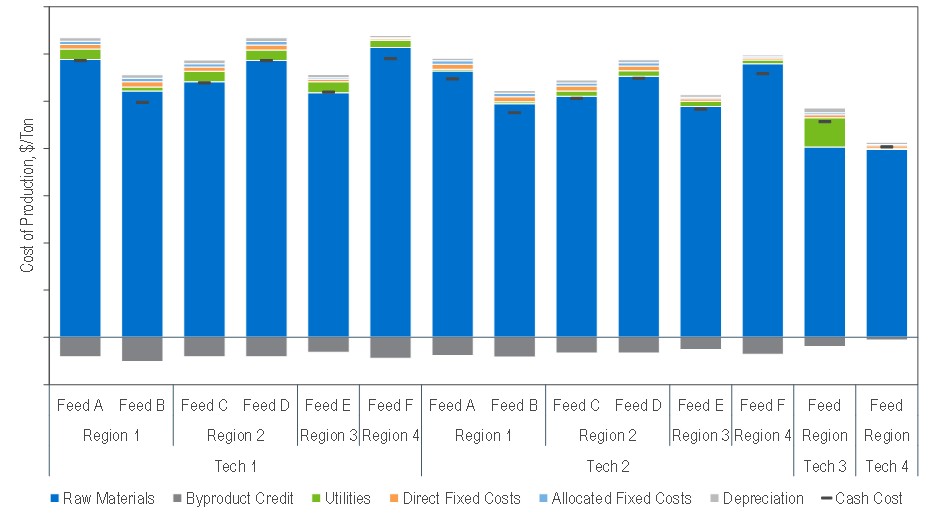News
New TECH Report - Oleochemicals (2024 Program)

Oleochemicals is one in a series of reports published as part of NexantECA’s 2024Technoeconomics – Energy & Chemicals (TECH) program.
Overview
Four commercially significant oleochemicals covered in the report are fatty acids, glycerines, methyl esters and fatty alcohol. These oleochemicals are used in a wide variety of applications such as cosmetics, personal care, pharmaceuticals and biodiesel. Although the technology for producing oleochemicals are mature and commercially established, in recent years, newer technologies had been developed and commercialized such as the Novonesis’ enzymatic technologies for fatty acid and fatty acid methyl esters (FAME) and the Inventure Supercritical biodiesel process.
This TECH report provides an updated overview of the technology, economics, and carbon intensity of oleochemicals. The following issues are addressed in this report:
- How do technologies differ? Which technologies are available for license?
- How do the different feedstocks differ in terms of product yield?
- How do the process economics compare across processes and different geographic regions? How does production cost and competitiveness change over time and what are the key drivers? What is the most cost-competitive feedstock for a given region?
Commercial Technologies
Overall, commercial oleochemicals production depend largely on the regions and feedstock used. Feedstocks such as palm oil, soybean oil, rapeseed oil, tallow and used cooking oil are common in their specific region. For fatty acid production, the choice of feedstock will determine the competitiveness of a fatty acid plant due to its differing yield, while for FAME producers, the cheapest feedstock is usually the most competitive route.
By far, the most common fatty acid production process is through the continuous fat splitting process where fat or oil reacts with water continuously at elevated temperatures and pressures. A new enzymatic process offered by Novonesis includes a “pre-splitting” process to improve yield, feedstock consumption and utilities consumption. For FAME production, the most common route is through the transesterification of fats or oils. Unconventional processes such as the Inventure Supercritical and Novonesis FlexFit® process are also covered in the report.
Fatty Alcohol plants have historically been based on converting the full-range (C6-C20) of fatty acids (or methyl esters), followed by esterification and hydrogenation to yield a bulk full-range of fatty alcohols that are fractionated into several commercial cuts of fatty alcohols. Modern processes fractionate the full-range fatty acids (or methyl esters) to screen the desirable carbon chain length before esterification and or hydrogenation.
Process Economics
Detailed cost of production estimates for various technologies are presented for United States, Western Europe, China and Malaysia.
FAME Cost of Production in United States, Western Europe, China, Malaysia
Commercial Overview
Fatty Acids are used in a wide variety of applications, either as the acid’s base form or in the form of derivatives, and include cosmetics, personal care, rubber, food processing, and pharmaceuticals. Methyl esters are intermediate chemicals increasingly replacing fatty acids as starting materials and used in a wide range of products, including fatty alcohols, alkanolamides, and α-sulfonated methyl esters. The most common fatty alcohols (C12-C14) are mainly used in detergents, lubricants, cosmetics, personal care and pharmaceutical products.
Contact a member to our Insights & Analytics team to find out more about this report
About Us - NexantECA, the Energy and Chemicals Advisory company is the leading advisor to the energy, refining, and chemical industries. Our clientele ranges from major oil and chemical companies, governments, investors, and financial institutions to regulators, development agencies, and law firms. Using a combination of business and technical expertise, with deep and broad understanding of markets, technologies and economics, NexantECA provides solutions that our clients have relied upon for over 50 years.




